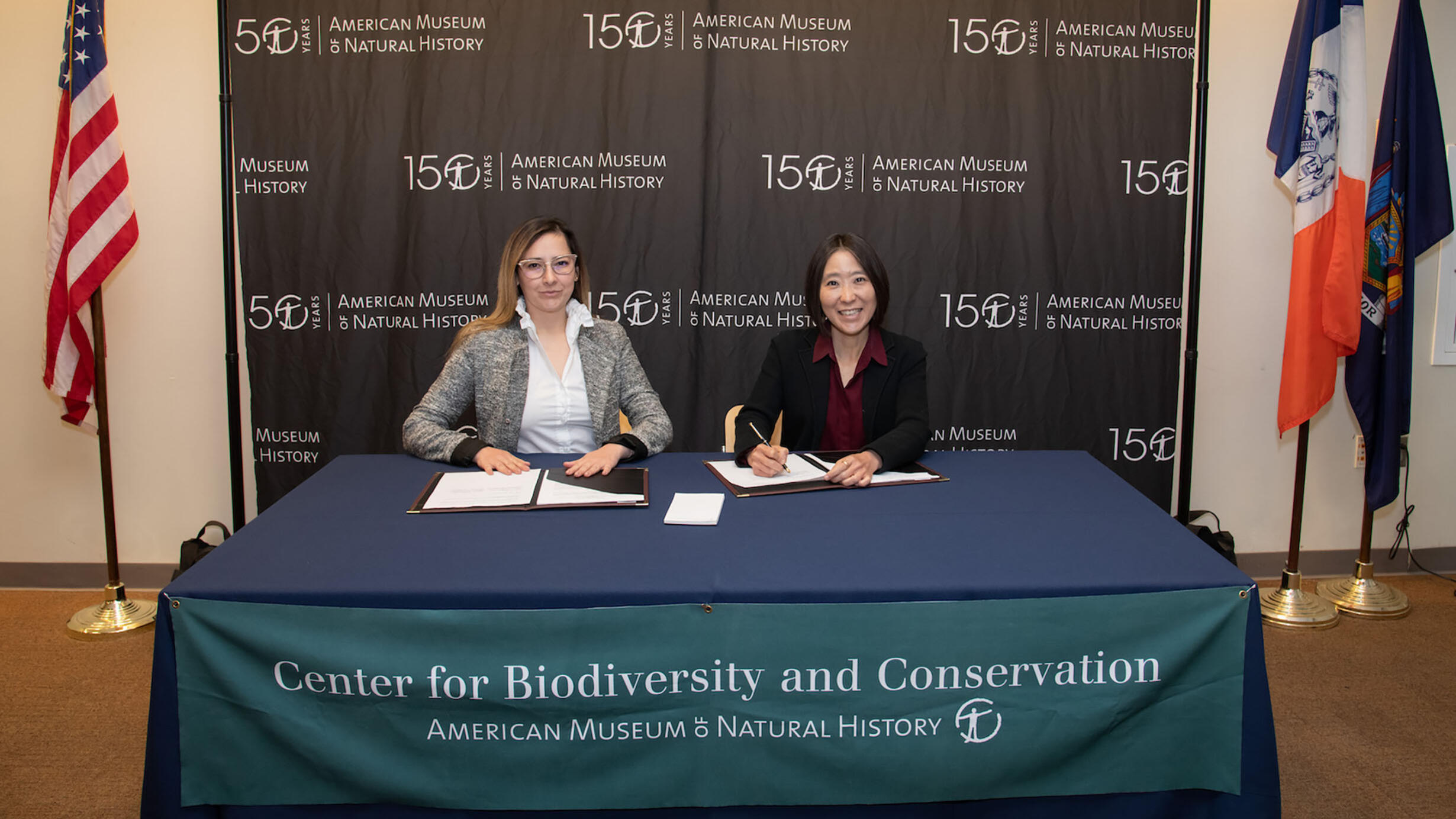 Sandra Perdomo Medina, the Head of the Humboldt Institute's Office of International Affairs, Policy, and Cooperation (left), and Cheryl Hayashi, the American Museum of Natural History’s Provost of Science, at the ceremony for the new memorandum of understanding between the two institutions.
Sandra Perdomo Medina, the Head of the Humboldt Institute's Office of International Affairs, Policy, and Cooperation (left), and Cheryl Hayashi, the American Museum of Natural History’s Provost of Science, at the ceremony for the new memorandum of understanding between the two institutions.The Museum and Colombia’s Alexander von Humboldt Biological Resources Research Institute will collaborate on a project to monitor and conserve biodiversity in the South American country as part of a formal memorandum of understanding signed in late last month.
The agreement is linked to a NASA grant recently awarded to the Museum and Temple University to incorporate a satellite-data-based biodiversity monitoring system into Colombian conservation practices.
“Colombia is the second most biodiverse country in the world, with the highest number of orchid and bird species of any country, and the second highest number of plants, amphibians, butterflies, and freshwater fish,” said Mary Blair, the leader of the project and the Director of Biodiversity Informatics Research at the Museum’s Center for Biodiversity and Conservation (CBC). “As we continue to see striking levels of biodiversity loss around the globe, Colombia set a goal of conserving 30 percent of its surface by 2022, part of a larger global commitment made by around 70 countries to promote biodiversity through the creation of protected areas and ending deforestation by 2030.”
The grant, which is expected to help Colombia meet these ambitious conservation targets, builds on a current NASA-funded Museum project that expanded how wildlife biodiversity can be measured and modeled in the country. The software the researchers developed combines views of the Earth from space taken by satellites with maps and climate-based models to create better estimates of an area’s biodiversity.
The new project will integrate the existing software with other tools and new remote-sensing datasets to support and test an advanced biodiversity monitoring system that will be hosted by the Humboldt Institute for Colombia’s scientists, government officials, and conservation groups, with a focus on protected areas.
“This partnership with AMNH, powered by NASA, plays a key role in advancing the scientific and technical agenda on biodiversity in Colombia,” said Humboldt Institute Director General Hernando Garcia. “Humboldt Institute delivers high-level results to support decision-making processes on environmental issues by national and regional authorities and civil society. The information on species and indicators generated under this collaboration, using spatial data, remote sensing, and monitoring, supports the intersection of science and policy as well as our country’s commitments to biodiversity conservation, sustainable development, and mitigation of the effects of climate change.”
The project builds on the Museum’s legacy of scientific research with Colombian colleagues.
In 2018, the Museum, led by associate curator and ornithologist Brian Smith, signed a memorandum of understanding with the Humboldt Institute focused on studying existing collections at the two institutions.
This agreement, which was re-signed when the original terms expired last year, has led to joint fieldwork expeditions in Colombia and an active mentoring and training program.